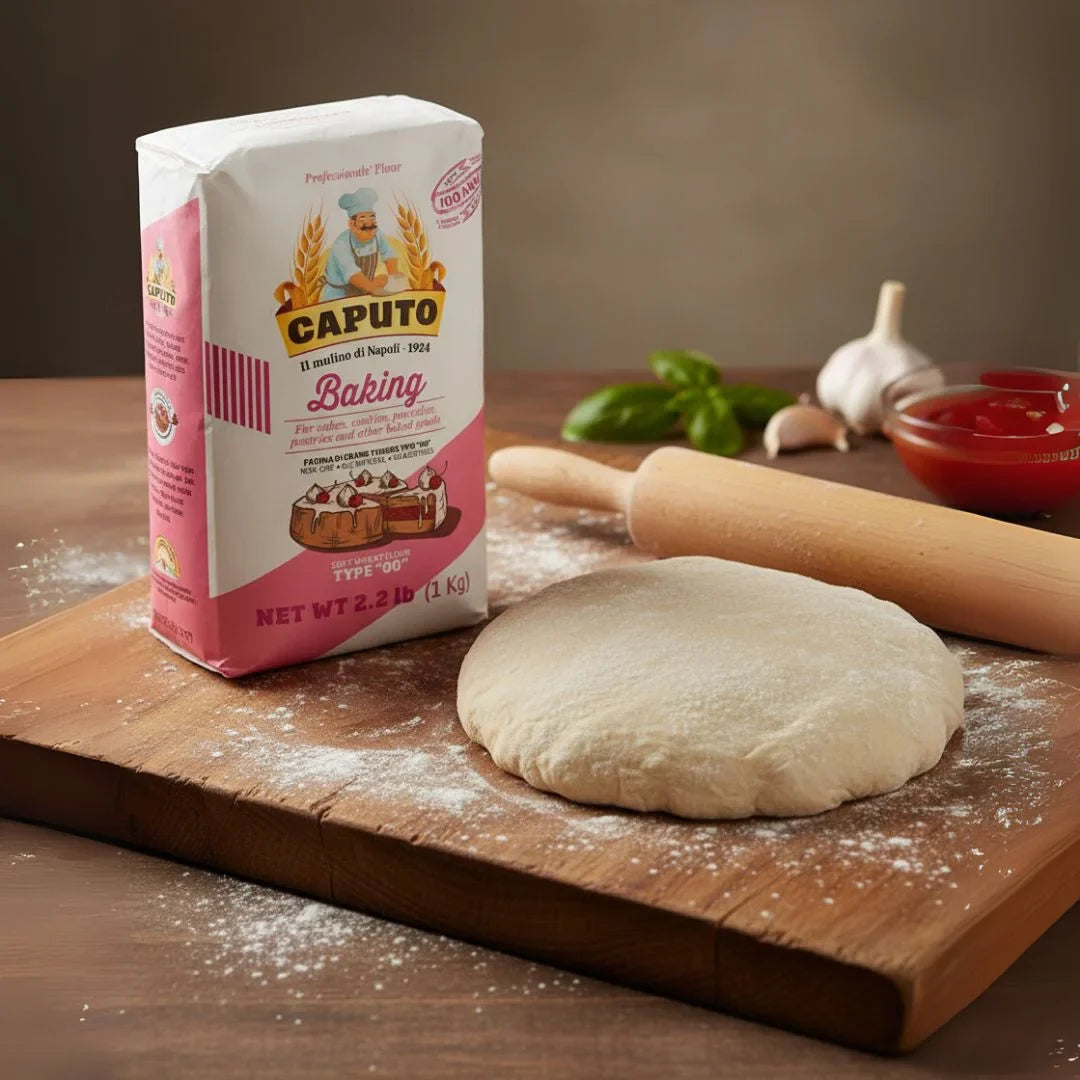
The Mill of Naples and the Gold Standard for Italian Flour
If you’ve ever had an authentic Neapolitan pizza with a light, airy crust that melts in your mouth, there’s a good chance it was made with Caputo flour. Known as “Il Mulino di Napoli”, Caputo has been producing premium wheat flours since 1924 and has become the preferred choice of professional pizzaiolos and home bakers around the world.
Let’s explore the story of Caputo, why it’s trusted by chefs, and how you can use it to take your pizza, bread, and pasta to the next level.
1. A Century of Milling Tradition
Caputo was founded in 1924 in Naples, the birthplace of pizza. For three generations, the Caputo family has perfected the art of milling, using a blend of traditional techniques and modern technology to produce flour that delivers consistent, superior results.
Their motto, “Il Mulino di Napoli” (The Mill of Naples), reflects their deep connection to Neapolitan culinary culture and their mission to supply the highest quality flour for both professional and home kitchens.
2. What Makes Caputo Flour Special
Caputo’s reputation is built on quality, consistency, and authenticity:
-
Careful Wheat Selection: Caputo sources the best wheat from Italy and around the world to create unique blends.
-
Slow Milling: They mill their flour slowly to preserve the natural protein and starch structure.
-
Additive-Free: No bleaches or chemical enhancers - just pure wheat.
-
Balanced Strength (W Value): Perfect gluten structure for dough that is elastic, easy to work with, and bakes into a light, airy crust.
3. Caputo’s Most Popular Flours
Caputo “00” Pizzeria Flour
-
The most famous product - finely milled, soft wheat flour ideal for traditional Neapolitan pizza
-
High elasticity for long fermentation (24-72 hours)
-
Produces soft, light dough with perfect leopard-spotted crust
Caputo Chef’s Flour (Red)
-
Slightly stronger gluten for longer proofing times
-
Versatile for pizza, bread, focaccia, and more
Caputo “00” Pasta & Gnocchi Flour
-
Lower gluten content
-
Perfect for homemade pasta, ravioli, and gnocchi with delicate texture
Caputo Gluten-Free Flour
-
Specially formulated blend for gluten-free pizza and baking without compromising flavor or texture
4. The Role of Caputo in Neapolitan Pizza
Caputo is the official flour of the Associazione Verace Pizza Napoletana (AVPN) — the organization that certifies true Neapolitan pizza. This means when you use Caputo flour, you’re following the same standard as the world’s best pizzerias.
5. Tips for Using Caputo Flour at Home
-
Hydration Matters: Start with 60–65% hydration for pizza dough and adjust as needed
-
Cold Fermentation: For best results, let the dough rest in the refrigerator for 24–48 hours
-
High Heat Baking: Bake pizza at the highest temperature your oven can reach (ideally 700–900°F in a pizza oven)
-
Pair with Quality Ingredients: Use good olive oil, San Marzano tomatoes, and fresh mozzarella for the full Italian experience
6. Beyond Pizza: Other Uses for Caputo Flour
-
Homemade Pasta: Make fresh tagliatelle or fettuccine with silky texture
-
Focaccia: Light, airy, and full of flavor
-
Artisan Bread: Rustic loaves with crispy crusts and soft interior
-
Desserts: Use in cakes and pastries for a delicate crumb
Conclusion
Caputo is more than just flour - it’s a piece of Italian culinary heritage. Whether you’re baking pizza in a wood-fired oven or making fresh pasta for Sunday dinner, Caputo gives you the tools to recreate authentic Italian flavors in your own kitchen.
Explore Pick and Get’s selection of Caputo flours and start baking like a true Italian pizzaiolo today.








